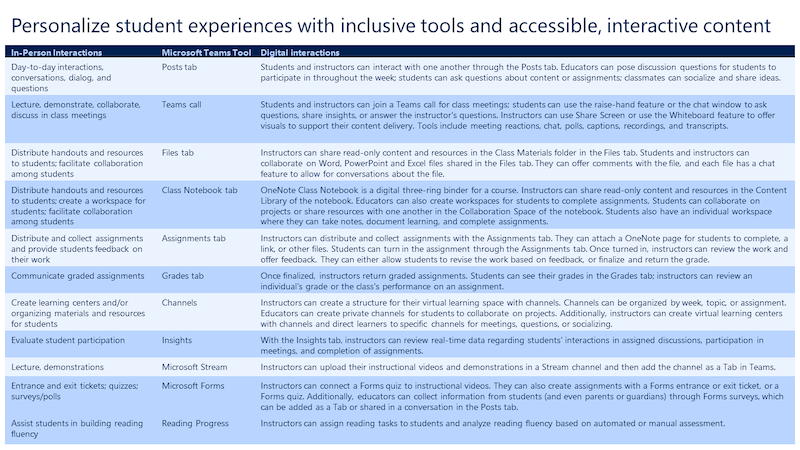Learning environments
Blending learning environments offers students the best of all worlds of learning. Partly online and partly face-to-face, blended learning gives students a chance to fully experience integrated learning as they grow along their own learning paths.
However, blended learning doesn't happen inherently; administrators and leaders must assess and evaluate current learning environments and work together to build opportunities that rethink instruction. Providing effective professional development that explains the various learning models is the first step in transforming learning environments.
Learning environments in blended learning spaces vary from classroom to classroom, depending on student needs. The most common models of blended learning:
- Station rotation – Students rotate through stations on a fixed schedule, and at least one station is an online learning station.
- Lab rotation – Much like the station rotation model, lab rotation involves stations on a fixed schedule, but the online portion is held in a dedicated computer lab.
- Individual rotation – Unlike station rotation and lab rotation, students may not rotate to every station; they only rotate to the stations that meet their learning needs. For example, imagine that a teacher discovered that four students are struggling with reading comprehension based on a formative assessment. During the next class, the teacher plans a rotation to help close the gap for the four students. Those four students spend the first half of the class with the teacher while the rest of the class works independently on an online reading program.
- Flipped classroom – Students learn at home using online resources, and in-person class time is spent on teacher-guided practice or working on projects.
- Flex – This model provides students a high degree of control over their learning, using mostly online learning. Teachers provide support and instruction only as needed.
- A la carte – When schools aren't able to provide particular learning opportunities such as Advanced Placement or elective courses, the a la carte model is helpful. Students can be enrolled in face-to-face courses at the same time but would take a la carte courses during convenient time periods.
- Enriched virtual – In this model, students attend online school full-time but have required face-to-face learning times with a teacher.
While effective blended learning doesn't have to involve technology-rich instruction, it does require use of the internet to help personalize each student's learning experience. This access promotes students' control over the time, place, and pace of their learning. Schools and school leaders must ensure that proper infrastructure is in place to provide a positive blended learning experience for students. Effective collaboration between leadership and IT departments is paramount.
Additionally, providing easily accessible additional resources to parents and students to use if technology isn't working correctly is extremely important. Making IT support an easy, natural part of blended learning helps ensure a positive learning experience for all.
The tools and features in Microsoft Teams allow for personalized, interactive experiences for educators and students that are inclusive and accessible. School leaders can model how to incorporate both in-person and digital interactions for teachers to see how best to utilize these options with students. Customizing the learning space to meet student needs is simple with the right set of tools.
